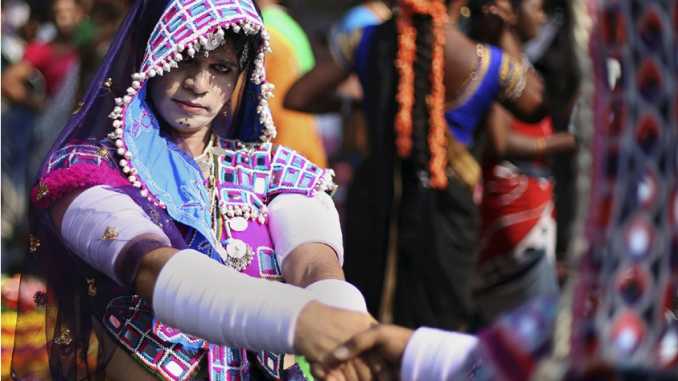
Sexuality’s spectrum is littered with labels. One that is getting increased attention in the U.S. political discourse nowadays is “transgender.” Generally speaking, the label refers to those who do not identify with the gender they were assigned at birth. More broadly, it indicates a transgression — to be “trans” is to defy rigid, binary constructions of gender and to live partly, or fully, beyond gender roles expected by society.
But Indian society, if we can momentarily suppose such a monolithic entity, is far older than the post-Victorian, normative society that defines the modern cultures of the West. People we might consider transgender have existed across societies for as long as they themselves have existed, but in South Asia they have formed distinct communities with histories and mythologies that go back hundreds, if not thousands, of years. Age-old texts such as the “Mahabharata” and the “Kama Sutra” refer to eunuchs, and there are tales of gods — even the most powerful of them — who change genders on a whim.
That is partly why the term “transgender” is seldom used in the Indian context. In Indian legalese, the term most commonly employed is “third gender” — as when, two Aprils ago, India’s “third gender” was acknowledged by the country’s Supreme Court, which stated that “it is the right of every human being to choose their gender.” Those wishing to can now indicate that status on government-issued identification and other formal documents, but, more importantly, Indian states were directed to afford special considerations through affirmative action and welfare programs.
In everyday usage, however, terms such as “hijra,” “kothi,” “kinnar,” “shiv-shakti” and “aravani” are more common, depending on which region of the country one is in. Of those, hijra is the most common and has a meaning similar to kinnar and aravani, the latter of which is used exclusively in Tamil Nadu, a southern state, and the former across the north of the country. The term is used by those assigned male gender at birth who do not identify as men. Many wear garish makeup and dress in clothing traditionally worn by women.
Hijras might be seen as the Western equivalent of transgender, but key to the distinction is the time-honored ritual of leaving one’s home — or being forced out — and undergoing induction into a clan of hijras led by an elder known as a “nayak” or guru, at which point the new inductee is known as a “chela.” Gurus and chelas have their own codes of conduct, and they often speak in Farsi-inflected variations of their local languages as a means for secrecy.
Traditionally, hijras were employed as singers and dancers, often serving the retinues of rulers both Hindu and Muslim. Additionally, they were, and are, seen as agents of fertility and attend births and weddings and bless the occasions in return for payment. They are an undeniable part of the country’s social landscape and enjoy high visibility, with most Indians encountering them regularly while going about their lives.
In 1871, the British colonial government passed a sweeping law that criminalized entire sections of society, including hijras, who they said were “addicted to the systematic commission of non-bailable offences.” From then on, hijras and other “third-gender” communities could be arrested on the spot. Hijras have since been “denotified,” but the legacy of that law, and the discrimination it spawned, haunts them to this day. In post-colonial India, hijras have been locked out of most professions, and it is common to see them begging on trains and at stoplights. A great many participate in the sex industry, and the rate of HIV among hijras is more than 100 times the national average. Recent studies document a wide range in prevalence, from 17.5 percent to 41 percent.
With greater access to information, some hijras have opted to identify as transgender. Others have taken advantage of sex-reassignment and breast-enlargement surgery. There have been steps toward greater participation in public life — India recently saw its first hijra mayor andschool principal. The definition of India’s “third gender” is necessarily in flux.
In public settings — such as when one encounters hijras asking for money on a train or blessing a wedding — many are boisterous and engaging. Much of Indian society stigmatizes them, but hijras typically clap as they approach passersby: a demand for recognition of their existence.

Leave a Reply